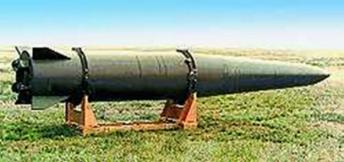Kremlin responds to US-NATO Threats: Russia Deploys Missiles on Western Frontier with European Union

The Iskander Missiles as the Guarantee of Normal Coexistence of Russia and Europe
Russia went public with the plan to deploy the Iskander missiles at its western frontier – in the Kaliningrad region or on the territories of neighboring countries, but the process of probing into Washington’s reaction is clearly taking too long. In politics, failure to appreciate the importance of acting quickly invariably creates problems, the above situation being a vivid example. The Iskanders are a remarkably potent weapon but it appears that Moscow risks playing the card as a minor element in the diplomatic game. One gets an impression that the threat to deploy the missiles in the Kaliningrad region has been aired too long for NATO on the whole or even Poland and the Czech Republic to take it seriously.
If this is the case and the powerful weapon is depreciated due to the evident lack of determination to use it, the adversary has reasons to conclude that the threat is nonexistent. In other words, NATO feels free to go on expanding east in line with its strategy and to disregard Russia’s objections as verbiage.
Recently Russian Minister of Defense and vehement proponent of the army reform A. Serdyukov inadvertently contributed to NATO’s resolution to make inroads into the post-Soviet geopolitical space. He said in Finland on February 19 that if Europe poses no threats to Russia there would be no Iskanders in the Kaliningrad region – they would be deployed only if threats emerge.
What does Serdyukov’s ‘if” amount to? The question is what new threats from the West does the Russian Defense Minister need to realize what is going on? The US stated with utmost clarity that its missile defense infrastructures would be sited in Poland, Romania, and Bulgaria. Other countries – Georgia and Turkey – will possibly also host them in the future. Is that not enough? Shall we wait for more? The threats are listed in Russia’s official military doctrine. Washington audaciously explains that it plans to site the missile shield in the proximity of Russia’s borders to neutralize the missile threat posed by North Korea and Iran. The authors of such “explanations” must be making fun of Russia.
M. Delyagin and V. Sheyanov exposed the folly of the above “defensive mentality” idly anticipating new threats in their The World Upside Down. Its carriers discern potential threats in the world around them but overlook entirely the opportunities linked to them. Failure to overcome the legacy of losing the Cold War and of under-performing during the past two decades breeds the “defensive mentality” in the ranks of Russian leaders that dooms the country to new defeats.
Gen. L. Ivashov wrote that Russia’s current military doctrine, military reform, and strategic arms control proposals are not synchronized and, moreover, are in disagreement over an array of significant issues. Is this not a promise of the coming new defeat?
You might ask how the Iskanders could help given the current state of Russia’s military affairs? An attempt to answer the question is made below.
The Iskander (NATO Reporting name SS-26 Stone) is a mobile theater ballistic missile system of a new generation superior to both other Russian missile systems (Skud-B, Tocka-U) and foreign analogs (Lance, ATACMS, Pluton, etc.). Designed by the Kolomna Machine-Building Design Bureau, the Iskander is built to suppress fire positions, air and missile defense systems, aircrafts at aerodromes, communication and control systems, and civilian infrastructures. The stealth technology is employed in the Iskanders which makes them invisible to radars. The Iskander performs evasive maneuvers and is immune to interception. It can be launched in complete darkness and can hit mobile targets with the precision of 2 m. At present no other missile system in the world boasts a comparable set of capabilities. The Iskander can be operated in combat continuously for 16 hours and is equivalent to nuclear weapon in terms of its overall potential.
If the decision to deploy Iskanders in the Kaliningrad region was actually made back when Russian President D. Medvedev mentioned the option for the first time, and undisguised preparations for the delivery of the missiles to the Russian enclave commenced (regardless of the situation around the US missile defense) now Moscow would not have to worry about responding to the US plan to station missile interceptors in Romania and Bulgaria. It is clear that the relations of partnership and mutual respect between Europe and Russia, which rank high on the list of Moscow’s priorities, could only be strengthened as the result.
Luckily, it is not yet late. There is still a chance that the Iskanders would serve as the guarantee of normal coexistence of Russia and the Atlantist Europe.

